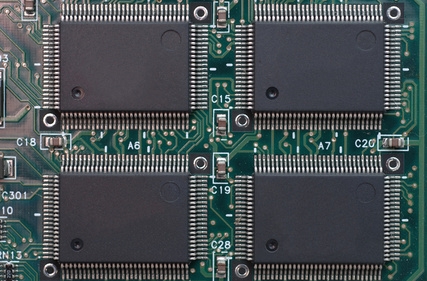
Transmissions can contain hundreds of components, most of which lead a hot, difficult life. Internal seals soften and leak bleeding away hydraulic pressure; clutches wear away, increasing slippage while shifting; and springs wear out and soften through constant heat-cycling. All of these can contribute to sluggish shifting and increased transmission temperatures.
Transmission fluid does more than just actuate the hydraulics in the valve body; it's responsible for helping the clutches stick together and engage when they're designed to. Transmission fluid is a complex mix of chemicals, many of which are friction modifiers that regulate the clutch pack's stickiness. These modifier wear out over time, which is why changing the fluid should be your first move.
Stop-slip contains solvents that help the clutches stick together, decreasing engagement time and slippage between gears. Don't add more than the recommended amount, though; excess solvents in the fluid can attack the clutch pack and change the fluid chemistry, which can kill your transmission rather quickly.
This is a fairly simple procedure if your vehicle is a 1996-or-newer; you need only plug a "power programmer" into the diagnostic port under the steering wheel and change the transmission's shift parameters. Power programmers aren't cheap and this can easily go wrong if you don't know what you're doing, so you might consider taking your car to a shop that offers this service or enlisting the help of an experienced friend.
This is not a simple procedure, so if you've never done it before then you'll definitely want to either take the car to a shop or enlist the help of an experienced friend. Shift-improvement kits come with detailed instructions, and generally require you remove the transmission oil pan; remove the valve body -- the transmission's "brain;" remove or replace a few of the bearing-like check balls inside; and replace the valve body using the supplied gasket/shim. Installation procedures vary greatly by vehicle; do not attempt this without having someone on hand who's done it before. Bear in mind that a shift kit won't fix a transmission in need of a rebuild; it will only extend the transmission's life a little.
Send your transmission to a shop to have it rebuilt. Transmission rebuilding generally involves replacing all of the internal valves and seals, as well as the clutch material and clutch discs. This is the line of last resort if none of the above steps solve your sluggishness problem, and can easily run you into a four-digit bill. There's absolutely no reason that you couldn't rebuild your own transmission, but doing so requires a certain amount of mechanical aptitude. Rebuilding a transmission isn't as difficult as you might think, but it does require a great deal of organization, the patience of a watch-maker and some specialized tools.
Under no circumstances should you ever completely flush an older transmission that has begun to act a bit sluggish. Transmission flushes are designed for vehicles that have always received regular fluid changes and maintenance from the day they were built. Worn-out transmission fluid eventually impregnates the clutches, and the impregnated fluid may not mix with the new fluid right away. This viscosity and friction co-efficient difference can easily lead to burnt clutches and complete failure. You might be able to get away with a complete flush after two or three fluid changes over the course of 20,000 miles, but even then you do so at your own risk.